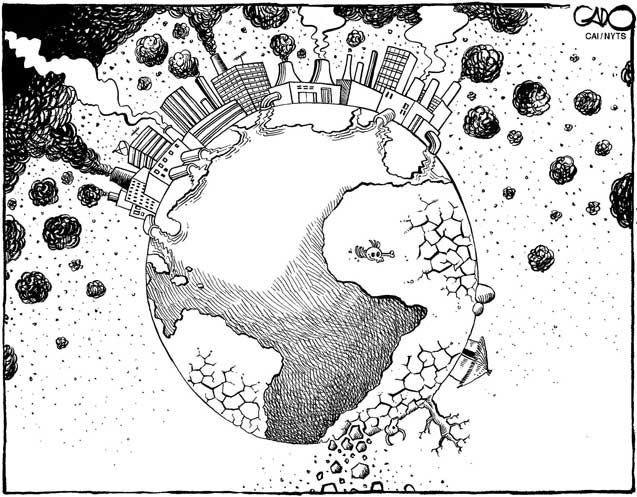
Daron Acemoglu and James Robinson, the authors of the book “Why Nations Fail,” recently reacted on their blog to the economist Allan Meltzer’s claim that the top 1 percent is surging everywhere, even in Sweden, so it’s not a proper political issue.
“There are significant cross-country differences in the trends in inequality, and it is far from obvious that all of these changes are explained by global trends,” they wrote in response to commentary by Mr. Meltzer published in The Wall Street Journal on March 9. “There is therefore a prima facie case that other factors — and yes, domestic and political ones — have also played a major role in increase in top inequality in the U.S.”
As Mr. Acemoglu and Mr. Robinson say, there’s other strange stuff in Meltzer: how does a rising premium for education explain soaring shares for a tiny segment of the highly educated? The premise about a global shock doesn’t stand up to evidence — not even the evidence Mr. Meltzer presents.
And you have no business talking about international income distribution if you don’t know about the invaluable World Top Incomes Database. What does this database tell us about Sweden versus America?
Hey, it looks just the same — or, actually, not. Yes, the chart on this page shows the top 1 percent has risen a bit in Sweden. But how anyone could look at this and see the story as similar boggles the mind.
Europe’s Two Depressions
Barry Eichengreen and Kevin O’Rourke recently published on the Center for Economic Policy Research’s Web site a follow-up to their hugely influential article, “A Tale of Two Depressions,” on quantitative comparisons of the Great Depression and the Great Recession. They point out that the slump wasn’t nearly as bad this time, and recovery began much sooner — but that the pace of recovery has clearly slowed. I was curious, however, about Europe. One of their key points in the original article was that we understate the similarity of the two slumps when we focus on America, which had a very deep decline post-1929 but a smaller decline this time. Elsewhere, the contrast was less marked. And in their update, a good part of the recovery reflects growth in emerging markets, not advanced nations.
So how does Europe look? I’ve been corresponding with Barry and Kevin, and while we haven’t done the full comparison, they pointed me to some suggestive numbers. Charles Feinstein, Peter Temin and Gianni Toniolo have data on interwar industrial production in their book “The World Economy Between the World Wars.” Meanwhile, Eurostat has compiled the numbers this time around.
So Europe had a 28 percent decline in industrial production peak to trough in 1929 and in the years following, versus around 18 percent this time. By year five of the original Depression, output had recovered to 86 percent of its previous peak; right now, production is 91 percent of previous peak, and falling as Europe slides back into recession.
So Europe is doing better this time, but not that much better — it’s sort of two-thirds of a Great Depression. Clearly, the answer is more austerity.
Our most important fundraising appeal of the year
December is the most critical time of year for Truthout, because our nonprofit news is funded almost entirely by individual donations from readers like you. So before you navigate away, we ask that you take just a second to support Truthout with a tax-deductible donation.
This year is a little different. We are up against a far-reaching, wide-scale attack on press freedom coming from the Trump administration. 2025 was a year of frightening censorship, news industry corporate consolidation, and worsening financial conditions for progressive nonprofits across the board.
We can only resist Trump’s agenda by cultivating a strong base of support. The right-wing mediasphere is funded comfortably by billionaire owners and venture capitalist philanthropists. At Truthout, we have you.
We’ve set an ambitious target for our year-end campaign — a goal of $150,000 to keep up our fight against authoritarianism in 2026. Please take a meaningful action in this fight: make a one-time or monthly donation to Truthout before December 31. If you have the means, please dig deep.